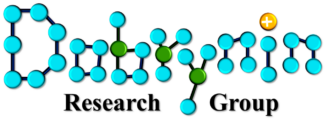Zilu Wang, Heyi Liang, Douglas H. Adamson, and Andrey V. Dobrynin
We use coarse-grained molecular dynamics simulations to study the formation of composite polymeric foams made by templated polymerization of emulsions stabilized by graphene sheets (G-sheets) acting as 2D surfactants. To demonstrate the affinity of the 2-D sheets to the interface between two immiscible A and B type solvents, we use the potential of the mean force (PMF) calculations. This study shows that the PMF curves converge to the universal form with increasing sheet size. Furthermore, the sheets’ affinity toward the interface diminishes with an increasing degree of substitution of the sites with A-solvent philic groups. The simulations of the emulsion stability show that the final emulsion structure depends on the emulsion composition and degree of modification of the sheets such that for 50% of the sheet site substitution one has inverted emulsion morphology. Composite polymeric foams are obtained by polymerization of the emulsion continuous phase and by removing the solvent minority phase. The mechanical properties of the foams are studied as a function of the sheet size and emulsion composition. In particular, the Young’s modulus of the composite foams monotonically increases with increasing the fraction of the G-sheets in the precursor emulsion. In the limit of small deformations, the stress–strain curves of composite foam deformation show convergence to a universal deformation curve with increasing sheet size. However, this universality breaks down in the limit of large deformations where deformation of the polymeric matrix dominates foam’s elastic response.

